In this post: Ready to laugh out loud learning Spanish? Try these 15 hilarious Spanish tongue twisters today with your kids!
I have always believed that language learning should be fun! One of the most hilarious things to practice with your kids are Spanish tongue twisters.
Here you will find 15 kid-friendly ‘trabalenguas’ that will get you howling with laughter as you practice your Spanish pronunciation together and exercise your tongue!
We have included a native speaker audio to support your pronunciation and you can download the complete list for FREE in our Spanish Freebie Library.
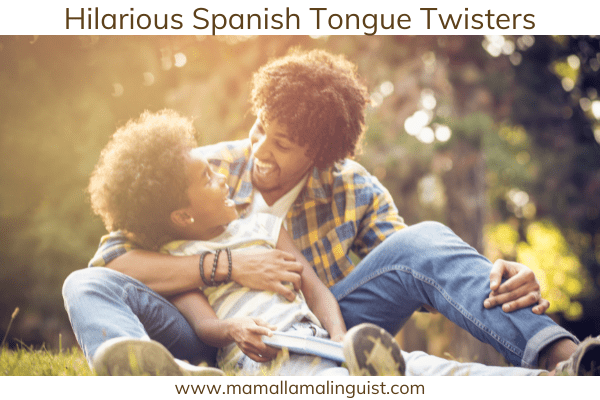
This post contains affiliate links. As an Amazon associate I earn from qualifying purchases.
What are Trabalenguas?
‘Trabalenguas’ is the Spanish word for ‘tongue twisters’. This is a sequence of words or sounds, that usually have the same first letter or sound, that are difficult to pronounce.
For all you grammar nerds like me, you may find it interesting to know that the verb ‘trabar’ means ‘to get tangled up’. The noun ‘lengua‘ means ‘tongue’.
I remember learning Spanish at college and one of our teachers would always start the class by ‘warming up our mouths’ with Spanish tongue twisters!
Looking back, I can see the learning benefits now but at the time it just seemed like a fun way to start each lesson and got us all giggling and relaxing.
Benefits of Tongue Twisters
There are many benefits to practicing tongue twisters in a second language like Spanish:
- They help you practice new and unfamiliar sounds like ‘doble erre: rr’ in Spanish.
- They are a great tool for energizing a class and giving the brain a boost of concentration.
- They strengthen facial muscles.
- They help you speak more clearly.
- They can be highly entertaining and lighten the mood.
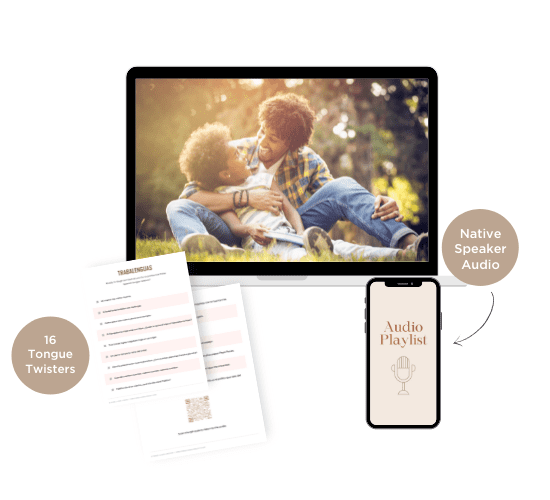
15 Easy Trabalenguas for Kids
The following Spanish tongue twisters will help your kids loosen up their mouths and practice those new sounds so they can start sounding more like a native speaker.
These are all beginner level and many have been shortened to help the child memorize them more easily:
- Spanish ‘m’ sound:
Mi mamá me mima mucho.
My mom spoils me a lot.
2. Spanish ‘b’ sound:
El bebé bebe bebidas con burbujas.
The baby drinks drinks with bubbles.
3. Spanish ‘o’ sound:
Como poco coco como, poco coco compro.
Since I eat little coconut, little coconut I buy.
4. Spanish silent ‘h’ and ‘hi’ sound:
El hipopótamo Hipo está con hipo. ¿Quién le quita el hipo al hipopótamo Hipo?
Hipo the hippopotamus has hiccups. Who is curing Hipo hippopotamus’ hiccups?
5. Spanish ‘tr’ sound:
Tres tristes tigres tragaban trigo en un trigal
Three sad tigers ate wheat in a wheat field.
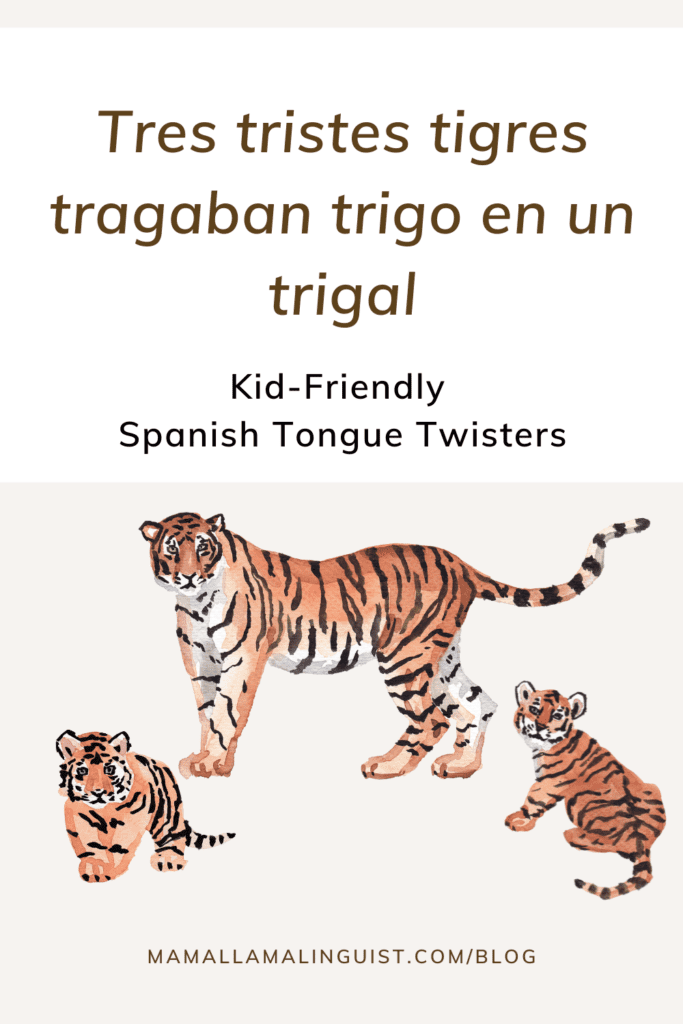
6. Spanish hard ‘r’ sound:
Un perro rompe la rama del árbol.
A dog breaks the tree’s stick.
7. Spanish plosive ‘p’ sound:
Pancha plancha con cuatro planchas. ¿Con cuántas planchas Pancha plancha?
Pancha irons with four irons. With how many irons does Pancha iron?
8. Spanish ‘cue’ and ‘cua’ sounds:
Cuando cuentes cuentos, cuenta cuantos cuentos cuentas.
When you tell stories, count how many stories you tell.
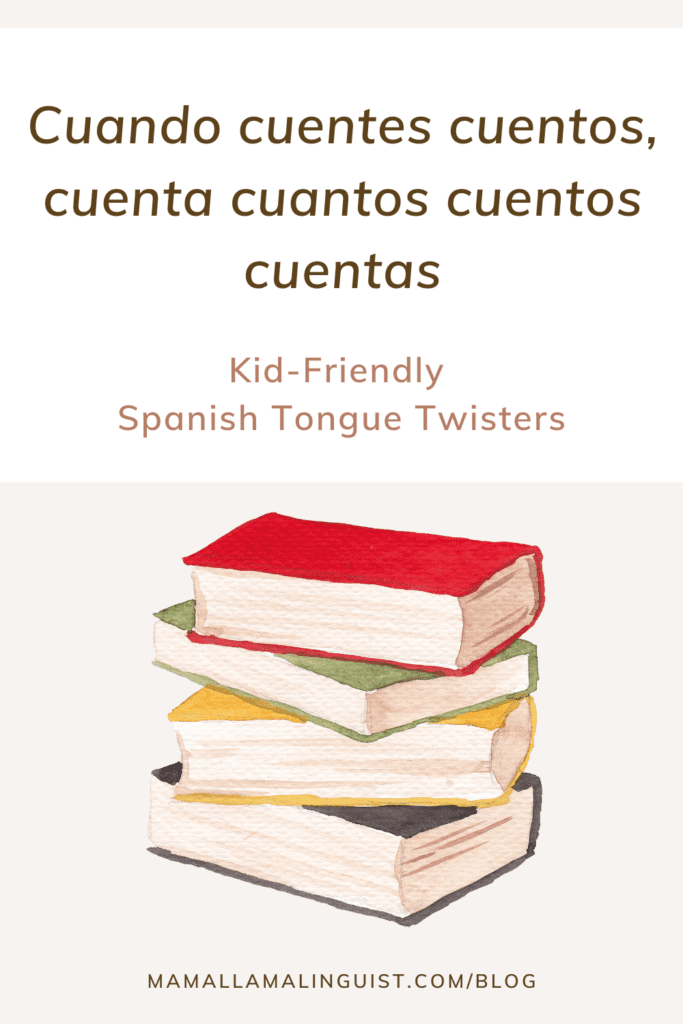
9. Spanish ‘cla’ and ‘ito’ sounds:
Pablito clavó un clavito, ¿qué clavito clavó Pablito?
Pablito nailed a nail. Which nail did Pablito nail?
10. Spanish ‘t’ sound:
La tortuga tortura a la otra tortuga tuerta, que tropieza con la tuerca tras la puerta
(The tortoise tortures the other one eyed tortoise who trips over the nut behind the door)
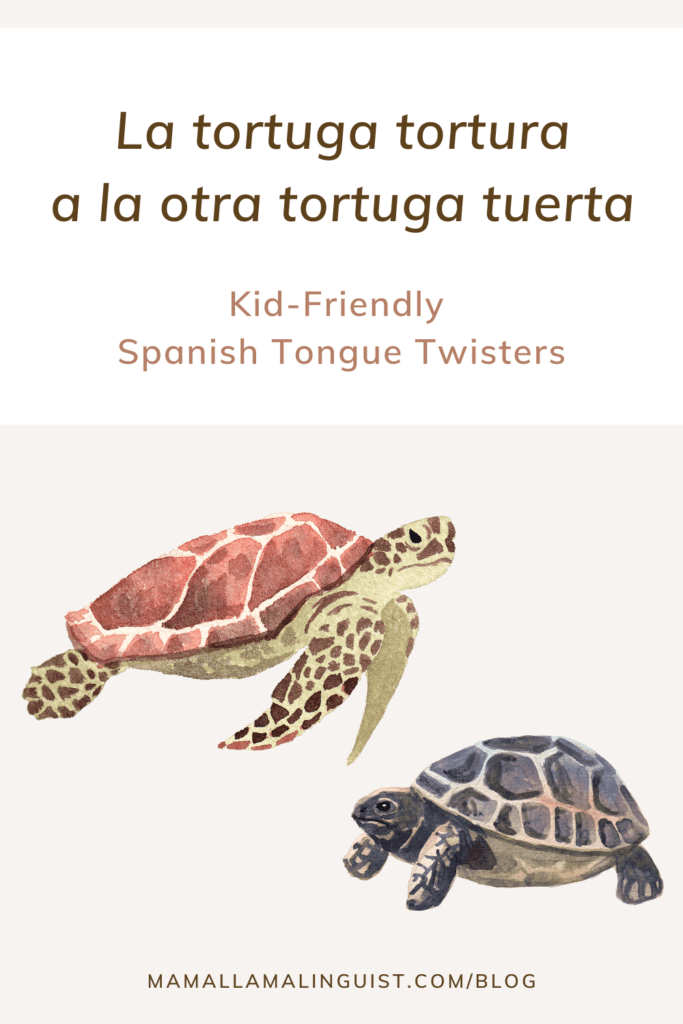
11. Spanish ‘g’ sound:
Gallo y grillo, gritan, gozan. Gritan, gozan, grillo y gallo.
(Rooster and cricket, shout, have a great time. Shout, have a great time, cricket and rooster.)
12. Spanish trill ‘rr’ sound:
Zorro zorro pide socorro con un gorro
(Fox, fox asks for help with a baseball cap)
13. Spanish ‘coj’ and ‘caj’ sounds:
El conejo se quedó perplejo al ver su reflejo en el espejo.
(The rabbit was perplexed at seeing his reflection in the mirror)
14. Spanish plosive ‘p’ sound:
Pepe Pecas pica papas con un pico, con un pico pica papas Pepe Pecas
This is the Spanish version of the popular ‘Peter Piper picked a pepper’ tongue twister in English. This version translates a little differently:
Joe Freckles chops potatos with a pick, with a pick Joe Freckles chops a potato.
15. Spanish preterite endings of the ‘yo’ form: í and é.
Cerezas comí, cerezas cené, tantas cerezas comí que me encerecé.
I ate cherries for lunch, I ate cherries for dinner, I ate so many cherries that I was filled up with cherries. The verb encerecar is actually a made up verb for this tongue twister.
BONUS:
As we are approaching Easter, this is a much easier but perfect seasonal tongue twister to learn with your kids:
Amarillo es el patito, amarillo es el limón, amarillo es el pollito que sale del cascarón.
The duckling is yellow, the lemon is yellow, the chicken that left the eggshell is yellow.
Don’t forget, you can download this list of Spanish tongue twisters in the Freebie Library.
Related Posts:
Best Homeschool Spanish Curricula
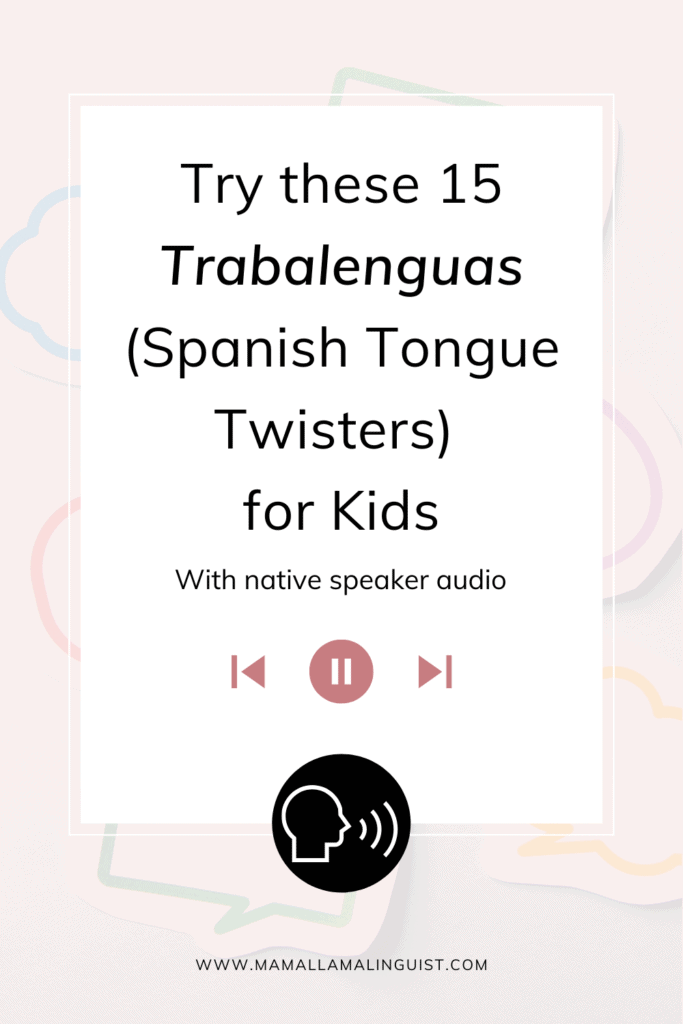
Founder of the Llamitas Spanish® Curriculum and former Spanish teacher. Corrie holds two Master Degrees in Spanish and Education. She lives in San Diego, California with her husband and two bilingual children.
